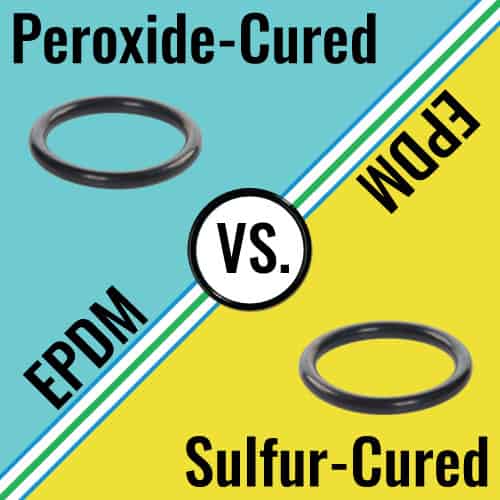Cure Systems for EPDM Material
 EPDM o-rings are known for their environmental resistance and long shelf life. Selecting the method in which EPDM material is cured depends on the end-use application. When it comes to choosing between peroxide-cured and sulfur-cured, differences including chemical, heat, and tensile resistance are factors that can influence which curing is right for your application.
EPDM o-rings are known for their environmental resistance and long shelf life. Selecting the method in which EPDM material is cured depends on the end-use application. When it comes to choosing between peroxide-cured and sulfur-cured, differences including chemical, heat, and tensile resistance are factors that can influence which curing is right for your application.
Peroxide-Cured vs. Sulfur-Cured
Peroxide-Cured EPDM o-rings possess greater resistance to high temperatures (up to 257ºF) and a low compression set. Peroxide-Cured EPDM o-rings are resistant to an expanded range of conditions such as alcohols, brake fluids, ketones, hot water, and steam (up to 400ºF). Peroxide-Cured EPDM also does not stain metal or PVC material. The advantages of sulfur-cured EPDM o-rings include greater tear resistance and tensile strength and its allowance for a wider range of fillers.
|
|
Why We Choose Peroxide-Cured O-Rings
Global O-Ring and Seal stocks peroxide-cured EPDM o-rings for their superior temperature range, compression set, and versatility in their end-use applications. Whether you require EPDM o-rings that are either peroxide-cured or sulfur-cured, feel free to give us a call at 832-448-5550 or submit a Product Inquiry form on our EPDM O-Rings page.

 English
English  Español
Español  Français
Français  Português
Português  Deutsch
Deutsch  Italiano
Italiano  Русский
Русский  中文
中文  日本語
日本語  العربية
العربية  हिन्दी
हिन्दी